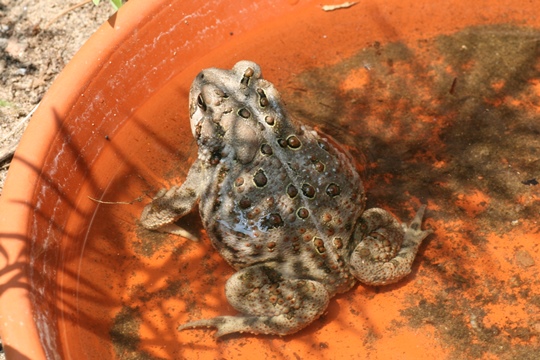Gardening with amphibians
If your garden does back onto a wetland, then you are likely to see or hear a range of frogs as the season progresses. It goes without saying that any chemicals you apply will move via surface runoff or throughflow into the local body of water, to the detriment of the animals and plants that live there. Manage your garden as though you are part of the wetland.
If you live away from water, you may be lucky enough to find toads in your garden as they can travel several kilometres from their spawning sites. You should welcome toads as they can eat lots of small creatures that can damage your plants. So, you have found a toad in your garden and want to help them out. Here are some things you can do:
1) Drop leaf mulch in the fall on your flower beds in various places around your garden.
A mulch of leaves provides cover for creatures that would not survive on bare soil. The soil under such a mulch is more likely to be damp. So, mulching with leaves will help a toad to find food and cover during hot days.
2) Provide a sandy area that is moist.
Toads like to dig for cover and sandy soil is best for this.
3) Provide water
If you do not have a small pond for them to use, go your local box store and buy a large glazed plant pot saucer. Dig a hole into the ground so that the rim is nearly flush with soil surface.
| |
 |
|
| |
When there has not been any rain for a while, you may find a toad getting some relief in a saucer of water. This picture was not set up. Toads really will take advantage of the water you offer. |
|
4) Provide Shelter
Get an unglazed flower pot from a box store and crack it into two pieces. Use the larger piece as a shelter. Angle the pot so that the entrance is just big enough for the toad to get into. Site the shelter behind some plants or in the shade so that it does not turn into an oven during the day. Also, keep the shelter close to the water source.
5) Provide an overwintering site. (more details to come on this)



